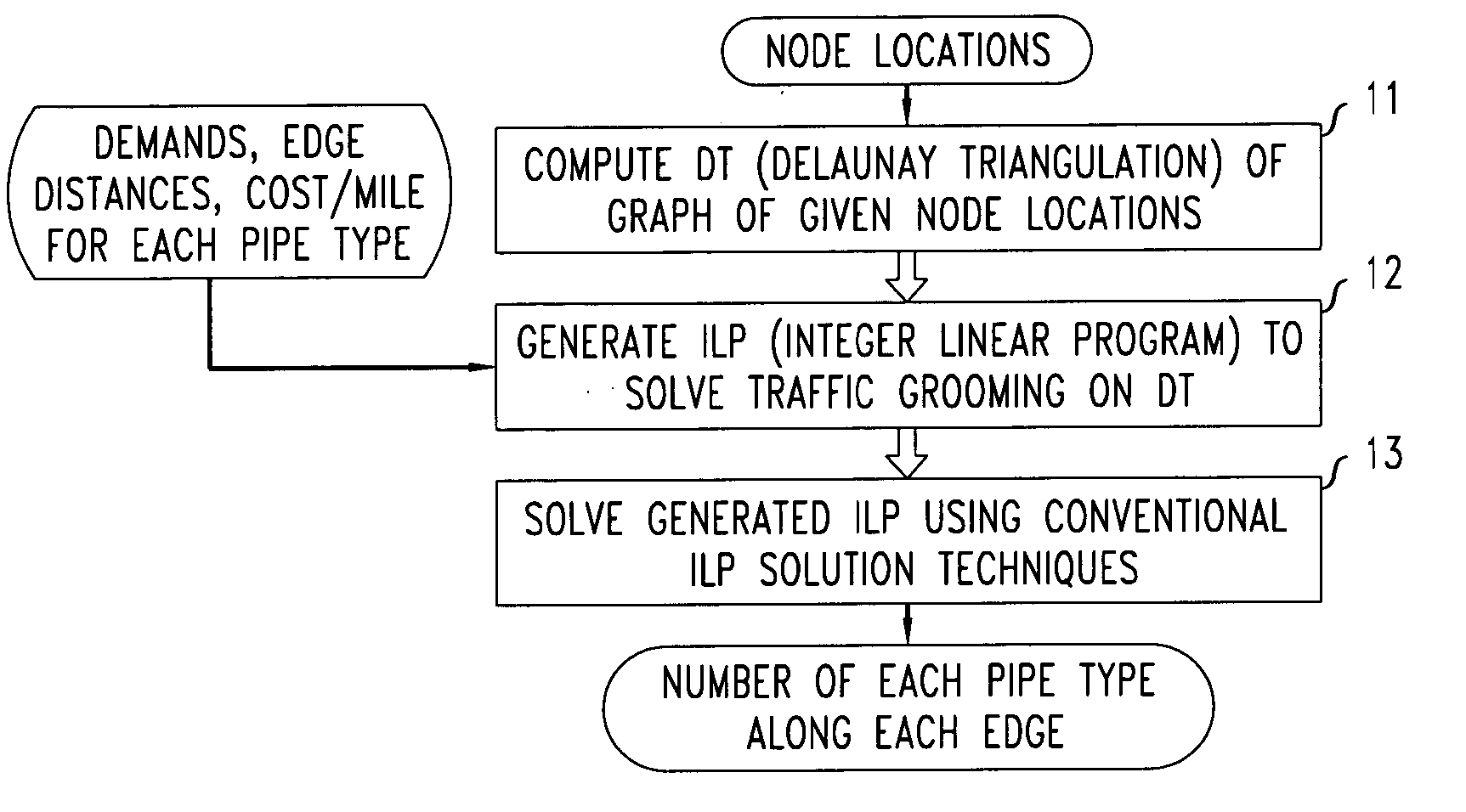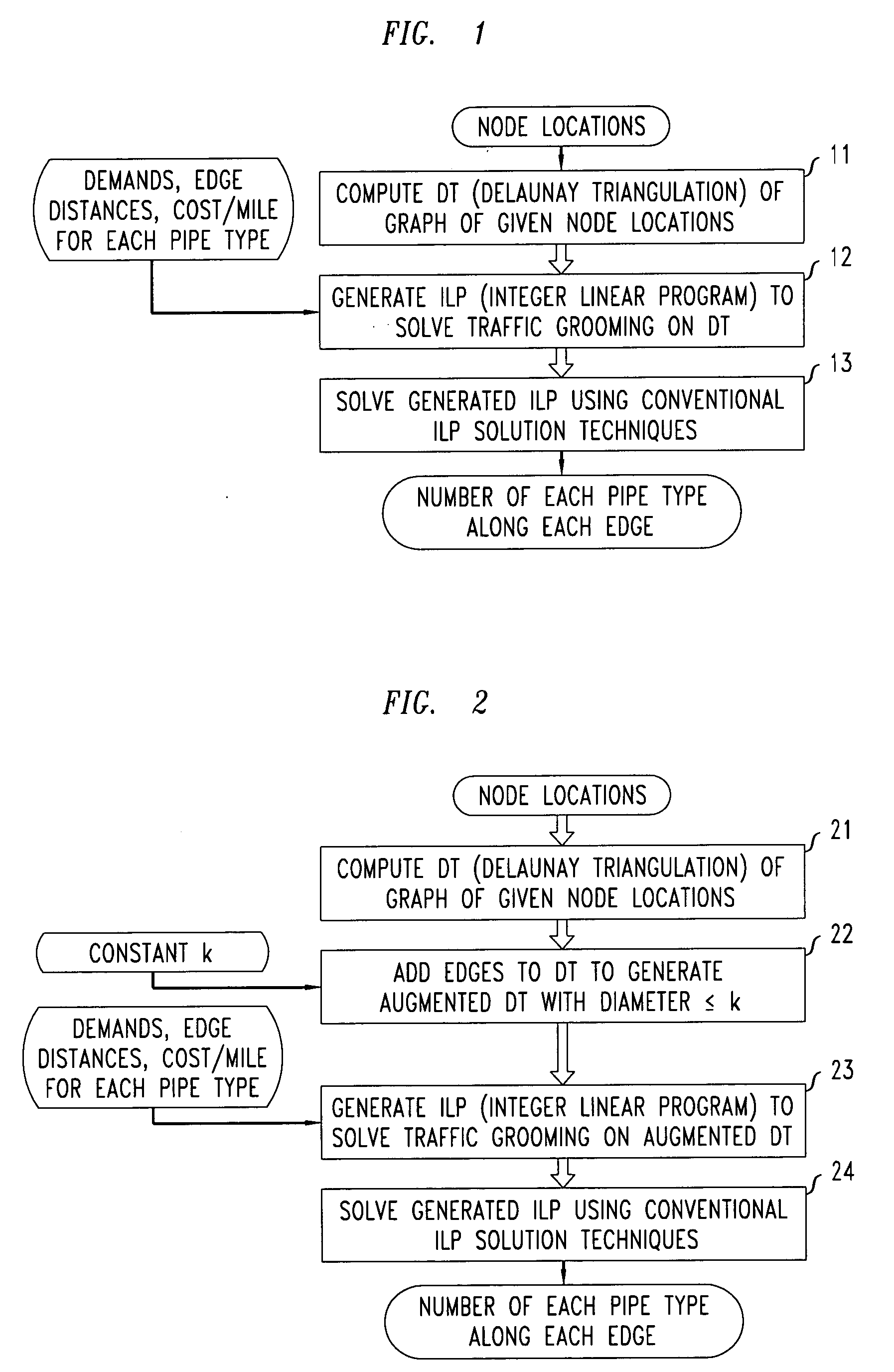Method and apparatus for grooming traffic demands according to mileage based tariffs
a technology of traffic demand and mileage based tariff, applied in electrical equipment, digital transmission, data switching networks, etc., can solve the problem of large time required to solve such an ilp, and achieve the effect of reducing the total cost of reserving pipes
- Summary
- Abstract
- Description
- Claims
- Application Information
AI Technical Summary
Benefits of technology
Problems solved by technology
Method used
Image
Examples
Embodiment Construction
[0016]FIG. 1 shows a flowchart of a procedure for grooming traffic demands according to mileage based tariffs in accordance with a first illustrative embodiment of the present invention. The illustrative embodiment of FIG. 1 takes as input a set of nodes (representing a completely connected network graph) along with a set of demands, edge distances and costs per mile for each of a plurality of types of pipes. The result of the illustrative procedure is a number of each pipe type along each edge.
[0017] Specifically, as shown in block 11 of the flowchart of FIG. 1, a Delaunay Triangulation (DT) of the original network graph (i.e., the input set of nodes) is computed. Then, in block 12 of the flowchart, an ILP (Integer Linear Program) is generated based on the generated DT and also based on the set of demands, edge distances and costs per mile for each of a plurality of types of pipes. Finally, in block 13 of the flowchart, the generated ILP is solved with use of conventional linear p...
PUM
 Login to View More
Login to View More Abstract
Description
Claims
Application Information
 Login to View More
Login to View More - R&D
- Intellectual Property
- Life Sciences
- Materials
- Tech Scout
- Unparalleled Data Quality
- Higher Quality Content
- 60% Fewer Hallucinations
Browse by: Latest US Patents, China's latest patents, Technical Efficacy Thesaurus, Application Domain, Technology Topic, Popular Technical Reports.
© 2025 PatSnap. All rights reserved.Legal|Privacy policy|Modern Slavery Act Transparency Statement|Sitemap|About US| Contact US: help@patsnap.com



